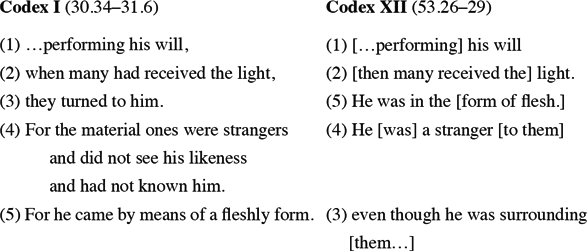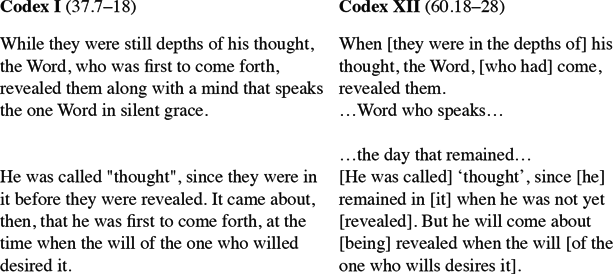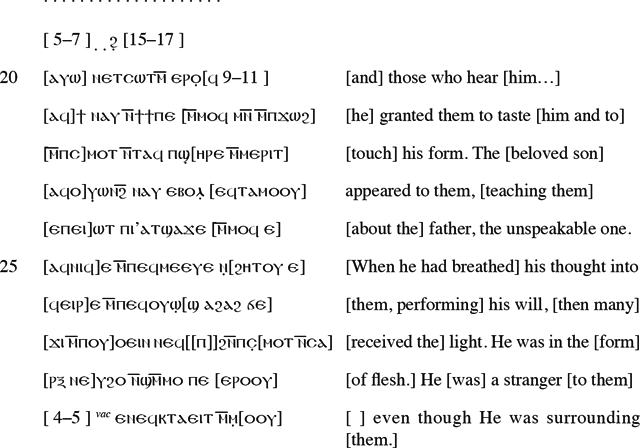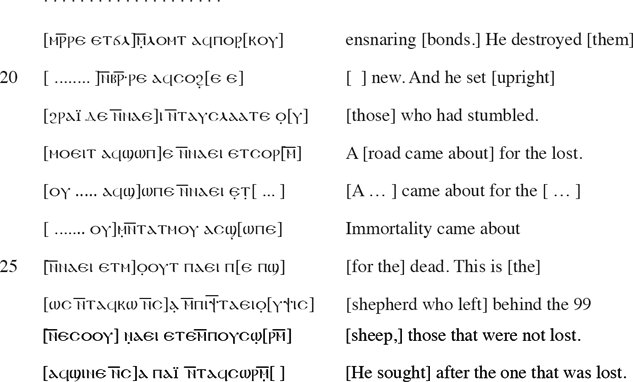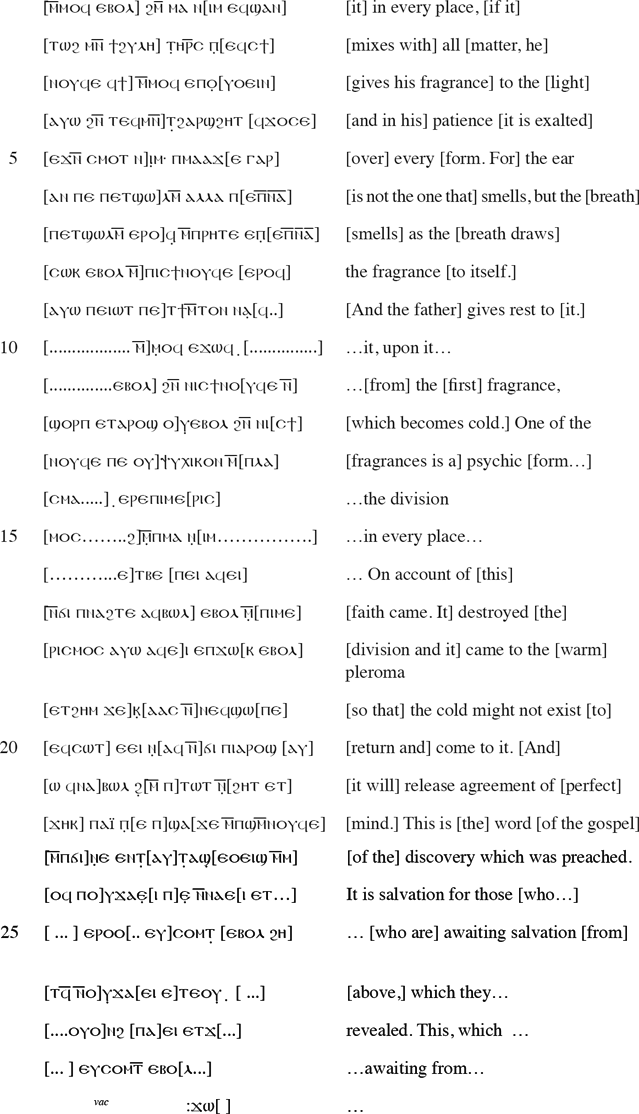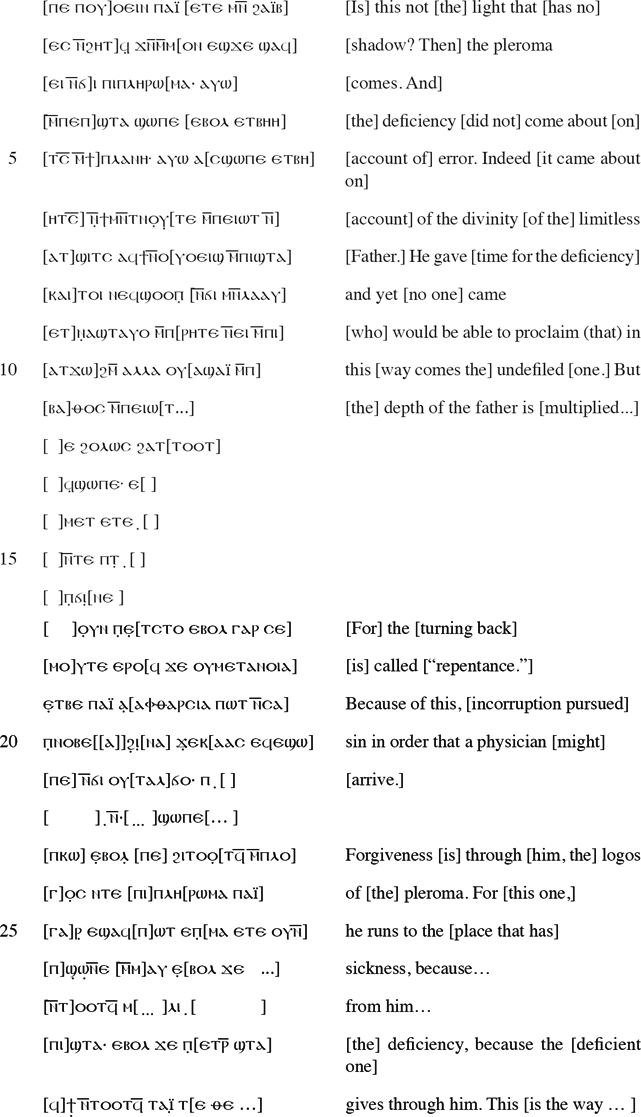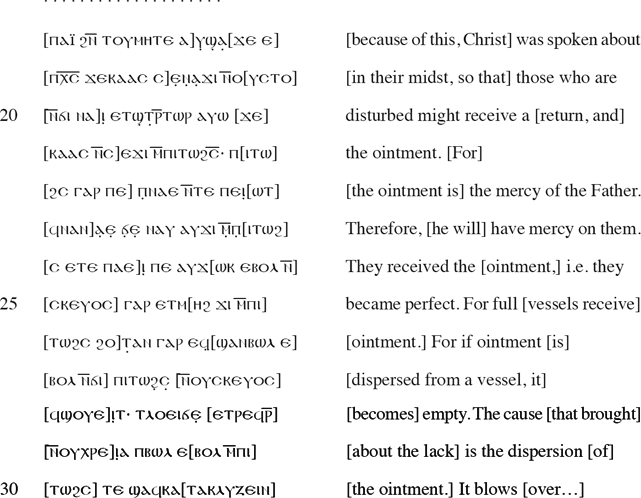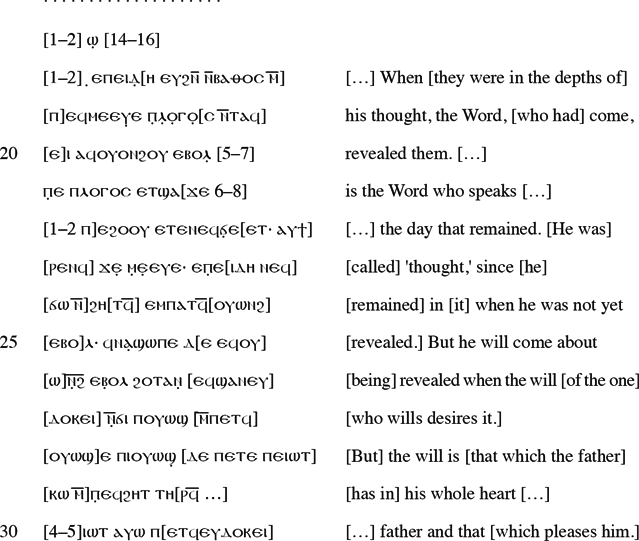Ancient polemicists claim that apocryphal texts contributed to the enduring popularity of the Origenist “heresy” in fourth- and fifth-century Egypt.Footnote 1 The anchorite Sopatrus associates “apocryphal literature” with “discussions about the image,” shorthand for Origenist debates over the loss of the image of God in humanity, and urges his hearers to avoid both apocryphal books and the theological controversy they incite.Footnote 2 In his festal letter of 401 CE, the archbishop Theophilus of Alexandria rails against Origenist teaching and urges Christians throughout Egypt to reject “Origen's evils” and disregard “Scriptures called ‘apocrypha.’”Footnote 3 Shenoute's association of Origenist themes with “apocryphal books” in I Am Amazed demonstrates that non-canonical writings continued to occupy a central position in Origenist theological debates well into the fifth century.Footnote 4
On the basis of these and other polemical reports, some scholars have suggested that among the assortment of largely “apocryphal” texts discovered at Nag Hammadi are examples of the kinds of non-canonical writings that could have participated in the Origenist controversy.Footnote 5 As early as the 1978 conference on Gnosticism at Yale, Rowan Greer speculated that the collectors of the Nag Hammadi texts might have been “a community of theosophical monks influenced by Origen.”Footnote 6 Jon F. Dechow has argued that monks may have discarded the Nag Hammadi texts from their libraries in response to the Origenist crisis in the fourth and fifth centuries.Footnote 7 Armand Veilleux has linked the burial of the Nag Hammadi library more specifically to the backlash against Origenism that ensued following the death of Evagrius Ponticus in 399.Footnote 8
More recently Hugo Lundhaug has labored to establish a surer connection between Origenism and the Nag Hammadi codices, first in his book, Images of Rebirth: Cognitive Poetics and the Transformational Soteriology in the Gospel of Philip and the Exegesis of the Soul,Footnote 9 followed by a spate of articles on the reception of the Nag Hammadi texts in fourth- and fifth-century Egypt.Footnote 10 By highlighting ostensibly Origenist themes in this body of literature, Lundhaug argues persuasively that many of the Nag Hammadi texts could have numbered among the “apocryphal books” condemned by Sopatrus, Theophilus, and Shenoute. For instance, texts like the Gospel of Philip and the Treatise on the Resurrection, Lundhaug argues, would have resonated with Egyptian Origenists who believed in a spiritual, rather than a carnal, resurrection.Footnote 11 By situating texts from Nag Hammadi within the context of the Origenist controversy, Lundhaug urges scholars to think more broadly about the types of “Origenism” circulating in late antique Egypt. While scholars like Elizabeth Clark attribute much of the Origenism of the day to the writings of Evagrius Ponticus, Lundhaug takes seriously the reports of the polemicists and calls attention to themes in apocryphal literature that could also have contributed to the popularity of Origenist theology.
In this article, I build upon Lundhaug's work by strengthening further the connection between Nag Hammadi texts and the Origenist debate in Egypt. I offer new evidence to suggest that the Gospel of Truth, an “apocryphal” text from Nag Hammadi, participated in the Origenist controversy in late antique Egypt. On the basis of a detailed comparison between the two versions of the Gospel of Truth—a nearly complete Lycopolitan copy from Codex I and a highly fragmentary Sahidic copy from Codex XII, of which I offer a fresh reconstruction—I seek to establish that the version from Codex XII was stripped of teachings that readers would have associated with Origenism. To be clear, I am not arguing that Origen influenced the author of the Gospel of Truth, a text that was likely composed sometime near the middle of the second century. Rather, a shared interest in Christian speculative theology that is at once exegetical and Platonic, coupled with Origen's own critical interaction with Valentinian works, yielded many similarities between the Gospel of Truth and Origen. Therefore, ancient readers of the Gospel of Truth would have associated many of its themes with the teachings of Origen and his supporters. In other words, sometime in the fourth or fifth century an anonymous editor removed elements of the text that could be read in support of the Origenist “heresy” in order to produce a theologically-acceptable version of this compelling homily on the gospel.
If persuasive, my findings both confirm and complicate the reports of anti-Origenists. The notion that some of the themes in the version of the Gospel of Truth from Codex I resonated with Origenist teachings lends credence to the reports of Sopatrus, Theophilus, and Shenoute, who claim that Christian apocryphal writings contributed to the popularity of Origenism in Egypt. Yet that Origenist teachings were removed from the version of the Gospel of Truth in Codex XII indicates that apocryphal texts were also part of the critical response to Origenism.Footnote 12 The version of the Gospel of Truth in Codex XII would have been of little use to an Origenist eager to find support for his theology in the early Christian exegetical tradition.
In what follows, I will discuss the history of scholarship on the fragments of the Gospel of Truth and recount the circumstances of their discovery and subsequent deterioration. Following a brief note on method, I will compare the textual complexions of the two versions of the Gospel of Truth and argue that the version in Codex XII likely underwent a stylistic and ideological redaction. I will then introduce two changes made to the text of Codex XII and interpret these instances of variation within the context of the Origenist controversy in late antique Egypt.Footnote 13 Finally, I will reflect briefly upon what these changes might suggest about the status of the text among its fourth- and fifth-century readers.
The Fragments from Nag Hammadi Codex XII
While the version of the Gospel of Truth from Codex I features prominently in scholarship on Nag Hammadi and Early Christianity, the fragments from Codex XII remain largely unstudied. Few scholars even note the existence of a second copy of the text. This pattern of neglect likely stems from one of two concerns: a suspicion that the copy from Codex XII is too fragmentary to be of much use, or a fear that what little remains of the second version differs so drastically from the version in Codex I that it calls into question the reliability of the text of the Gospel of Truth as we know it. Einar Thomassen's remarks are representative:
It must be admitted that there is no guarantee that the text now available to us, a Lycopolitan (“Subachmimic”) Coptic version in a manuscript from the middle of the fourth century, is a faithful reproduction of the Greek text known to the Valentinians of the second century. Intriguing in this regard are the fragments of a Sahidic version of Gos. Truth found in NHC XII, which seems to differ in several places from the text of NHC I. Unfortunately, the fragments are so small that a systematic study of the relationship between the two versions does not seem possible (and has, indeed, never been attempted).Footnote 14
Scholarship on the fragments is sparse. Following Frederik Wisse's transcription, initially published in 1985 and later revised and supplemented with notes in 1990,Footnote 15 only a brief assessment of the fragments has appeared in print. At the close of R. Mortley, “The Name of the Father is the Son (Gospel of Truth 38),” Michel Tardieu offers the following addendum: “A careful comparison of the two extant versions shows that the Sahidic version (Codex XII) is based on a short text, on which the Akhmim version (Codex I) appears to be a commentary.”Footnote 16 Since Tardieu never published the details of his “careful comparison,” it is not possible to evaluate his work. No additional studies have been published, though Jörgen Magnussen informs me that, in consultation with Stephen Emmel, he has conducted an investigation into the relationship between the two versions of the text and has arrived at the opposite conclusion: that the editor of the version in Codex XII likely shortened the text. In a recent paper delivered at the first international workshop of the NEWCONT project, Katrine Brix analyzed the fragments from Codex XII, yet her findings too remain unpublished.Footnote 17
In this article I present the results of my own comparison of the two versions of the Gospel of Truth. In general, I agree with Magnussen and Emmel that the shorter version of the text is likely secondary. Additionally, I have detected several previously unnoticed ideological changes made to the shorter text, which suggest that the version of the Gospel of Truth in Codex XII was not only abbreviated, it was also systematically stripped of theology that would have resonated with Origenist readers and perturbed anti-Origenist ones.
The circumstances surrounding the discovery and subsequent deterioration of the second copy of the Gospel of Truth are remarkably well documented. If James Robinson's account of the discovery of the Nag Hammadi library is to be believed,Footnote 18 then Codex XII sustained the majority of its damage not gradually over the course of the fifteen centuries it sat buried within the sands of Egypt, but in the hours and days following its discovery in 1945. After Muhammad ‘Ali al-Samman removed the codices from the earthen jar, he apparently tore off the cover from Codex XII and separated its leaves in order to distribute the twelve books evenly among the eight camel drivers. When the other men refused their portion, ‘Ali took the entire lot home and placed it atop a pile of straw on the patio, near the family's clay oven. ‘Ali's mother, Umm Ahmad, later tossed into the oven many of the loose fragments lying outside the covers.Footnote 19 We can only assume that among the tinder Umm Ahmad used to cook the evening bread were several of the leaves now missing from the Gospel of Truth. As incredible as this story sounds, it was corroborated by multiple sources, including Umm Ahmad herself, who admitted to Robinson that she burned the fragments; the account also provides a plausible explanation for the otherwise perplexing hodgepodge of leaves now missing from Codex XII.Footnote 20
Umm Ahmad apparently sold the remaining loose leaves (including fragments from Codex XII), along with four bound codices, to Bahij ‘Ali, a local outlaw with ties to Cairo's antiquities market, for a total price of £E 12 to £E 18 (according to Bahij) or £E 12 plus 40 oranges (according to Muhammad ‘Ali). At this time, Bahij ‘Ali may have stuffed the fragments from Codex XII into the cover of Codex X, which lacked most of its leaves. Bahij then traveled alone to Cairo and sold the books directly to Phocion J. Tano, an antiquities dealer and proprietor of the Antiquities Gallery. In 1949, Codex XII was transferred into the custody of the Department of Antiquities, and then relocated to the Coptic Museum in Cairo on June 9, 1952. The codex was officially declared national property in 1956.Footnote 21
Images of the fragments appear in the 1973 Brill facsimile edition.Footnote 22 However, four more fragments were successfully placed following the publication of the facsimile edition. Fragment 7 from Codex XII was placed at 59.24–27 and 60.24–26, and fragment 4 was placed at 53.24–25 and 54.24. Two fragments originally conserved with Codex VIII were also placed, the first at 59.22–23 and 60.21–22 and the second at 59.23–25 and 60.22–24. Since the photographs published in the facsimile edition of Codex XII were taken before these four fragments were successfully placed, following appendix one to this paper—my own transcription, reconstruction, and translation of the text—I offer as a second appendix images of fragments 1 and 3 with all of the smaller fragments placed. These images were taken by the Coptic Museum in Cairo in 1977 and were made available to me courtesy of the Institute for Antiquity and Christianity at Claremont College. I have used photo-editing software to create an image of Fragment 3 with all smaller fragments placed.
A Note on Method
Comparing largely reconstructed fragments with a nearly complete text brings with it certain methodological challenges. We must acknowledge and appreciate Einar Thomassen's skepticism and consider to what extent such a project is even possible. On the one hand, if one depends entirely on the text of Codex I for reconstructions, one runs the risk of comparing two similar texts, and the reconstructionist serves as little more than a copyist, or in this case, a dialectician. On the other hand, if one deviates from Codex I and offers creative though plausible reconstructions, one runs the risk of collating a text of their own making with an ancient one, a project of little historical benefit. Therefore, I have followed what I call the principle of minimal difference. Wherever possible, I have reproduced the text from Codex I in the lacunae of the fragments from Codex XII. Where this is not possible, I have attempted alternative renderings of similar concepts. And finally, in those instances in which the gaps in the fragments will not accommodate the text of Codex I, I have not supplied a reconstruction. The net result is the minimal difference between the two copies of the Gospel of Truth. That is to say, the two versions are at least this different, though in reality, they likely diverge even more. A minimal difference approach isolates only those instances of certain deviance between the two tractates, and should quell the fears of scholars, such as Thomassen, who question whether a detailed comparison of the two versions is even possible.
General Observations and the Question of Priority
One striking difference that emerges when we compare the reconstructed fragments of Codex XII to the near complete version in Codex I pertains to length. In nearly every variation unit, i.e., in those passages in which the texts diverge, the reading in Codex XII is shorter than the reading in Codex I. Observe the following table of variations between Codex I and Codex XII. Longer readings are underlined.Footnote 23 Footnote 24
Table 1. Variations between NHC I,3 and XII,2
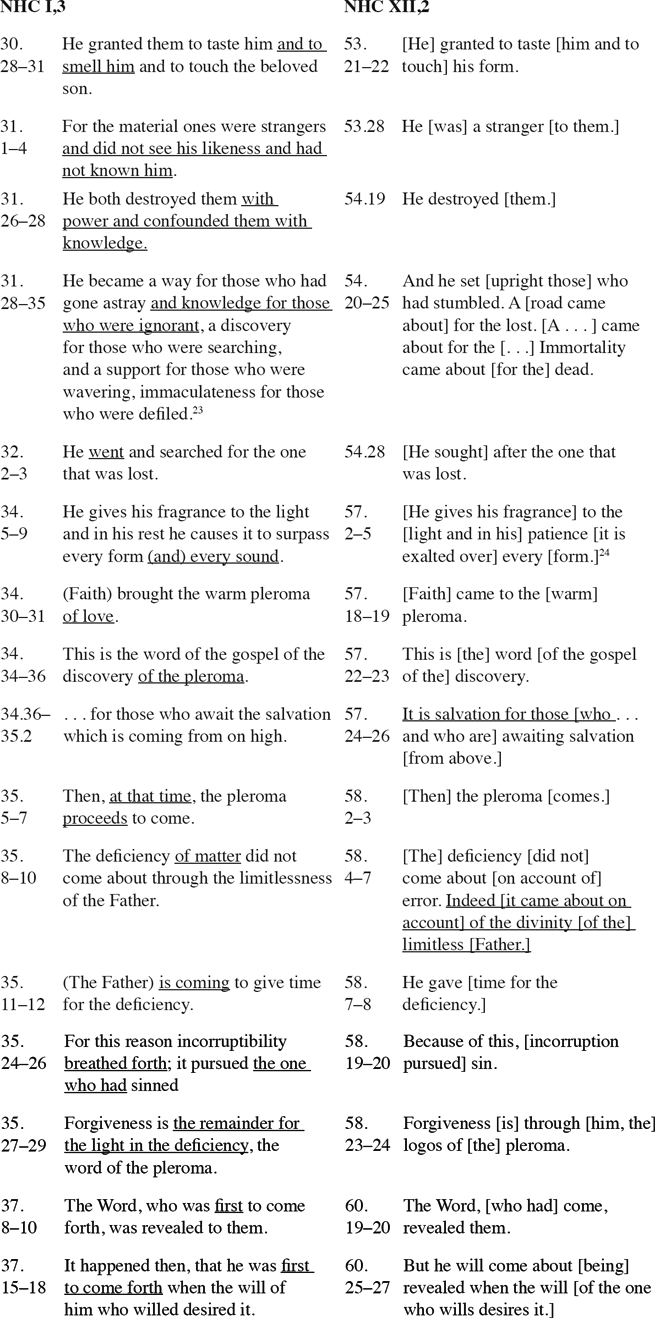
Codex I preserves the longer reading in most variation units. Differences between the texts include addition of a helper verb, addition of an item in a series, addition of an explanation, added description, and finally ideologically motivated changes. Though I am chiefly interested in the ideological differences between the two versions, I offer now some observations on the other types of variation in order to answer the question of priority. Have the longer readings found their way into the text of Codex I, or have they been removed from the text of Codex XII? In other words, has Codex I increased in size or has Codex XII become shorter?
One important variation between Codex I and Codex XII may help us determine which version preserves the earlier text. Let us look carefully at the two versions of the parable of the lost sheep. I have underlined the most striking difference between the two.
Codex I
He is the shepherd who left behind the ninety-nine sheep that were not lost. He went and searched for the one that was lost. (31.35–32.3)
Codex XII
This is [the shepherd who left behind] the ninety-nine [sheep,] those that were not lost. [He sought] after the one that was lost. (54.25–28)
An ardent interpreter of early Christian writings, the author of the Gospel of Truth reflects in this passage upon the parable of the lost sheep in Matt 18:12, which reads as follows in the original Greek and in Sahidic Coptic and English translation:Footnote 25
What do you think? If any man has a hundred sheep and one of them strays, will he not leave behind the ninety-nine on the mountains and go to find the one that is straying?
Though this comparison brings to light the Gospel of Truth’s tendency to allude to rather than quote Scripture, it is significant that both the Greek and the Coptic biblical texts contain the longer reading—the Greek with a participle and a finite verb, and the Coptic with a series of conjunctives.Footnote 28 In other words, the longer reading in Codex I is a more faithful rendering of the Greek and Coptic text of Matthew.Footnote 29 Of course, the possibility exists that the shorter reading is original, and that some Christian scribe noted the allusion and harmonized the passage with the biblical text. But if this were the case, one would expect other harmonizations as well, such as a mention of the mountains. Certainly the mountains would prove a more memorable aspect of the biblical text than a verbal auxiliary.
But if we are to believe that the fuller reading in Codex I is primary, then we need to account for Codex XII's verbal omissions in this passage and two others (i.e., 35.5–7 and 35.11–12). Why would someone omit these verbs? The answer is clear enough; what were probably participles in Greek became clunky, rambling sentences in Coptic. At some point after translation, the text of Codex XII, or one of its ancestors, was made more concise and elegant, and superfluous verbs were excised. The alternative is much less likely. Why would an editor introduce these verbs? Biblical harmonization is a possible, though unlikely, explanation for the shepherd passage, but one searches in vain for an explanation for the other two. Therefore we must conclude that someone “cleaned up” the text of Codex XII or one of its ancestors, and that the fuller readings in Codex I are most likely representative of the earlier text (Figure 1). We can easily imagine that the other abridgements noted above belonged to this tidying effort as well.
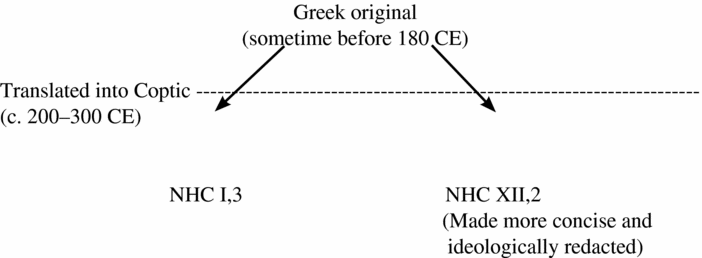
Figure 1. Stemma of the Gospel of Truth in NHC I and XI
The nature of the ideological changes to Codex XII reaffirms the priority of Codex I. As I will demonstrate, teachings associated with the theology of Origen and his followers present in Codex I are consistently missing from Codex XII. The development of late antique ecclesiastical politics and theological polemics make it much more likely that Origenist elements were removed from the Gospel of Truth than added to it. As Samuel Rubenson has argued persuasively, Origen's influence upon Egyptian Christianity was pervasive and relatively unproblematic throughout the third and fourth centuries. Antony, Athanasius, and Evagrius all build upon the teachings of the Alexandrian theologian unapologetically. Only at the end of the fourth century, when Theophilus of Alexandria set his sights on Origen—whom he too initially endorsed!—did a conscious anti-Origenism emerge. Rubenson concludes: “There is no reason to believe that Origen's influence was growing towards the end of the [fourth] century, but rather it was gradually becoming a problem, and that what Evagrius and his friends struggled for was the preservation, not the introduction, of a heritage ultimately dependent upon the school of Origen.”Footnote 30 Given this crescendo of anti-Origenism at the end of the fourth century, the addition of Origenist teachings to the Gospel of Truth is much less likely than their removal. Thus, both internal and external evidence supports the general priority of the Gospel of Truth as we know it from Codex I.Footnote 31
Evidence of an Anti-Origenist Redaction
Now let us examine two instances of ideological divergence between the two versions. In each case, the themes removed from Codex XII belong to the lexicon of Origenist thought. At issue are the accessibility of the divine image and likeness and the origin and uniqueness of the heavenly Word. The fact that Codex XII repeatedly omits Origenist themes suggests that this version of the Gospel of Truth was likely stripped systematically of its Origenist elements so that it could no longer lend support to the theology of Origen and his sympathizers.
Passage 1: God's Image and Likeness in Humanity
The first indication of controversy arises in a passage about humanity's initial resistance to and eventual reception of the Savior's earthly teaching. Here are the two versions of the passage in synopsis:
One might initially suspect on account of the broader literary context that these sentences belong to different passages altogether, that they are not truly parallel. Whereas Codex I transitions into a discussion of the incarnation (“For he came by means of a fleshly form.”) Codex XII shifts into a discussion of Son's encircling of humanity (“even though He was surrounding [them.]”). Yet it becomes clear that the two passages are parallel when we observe that both versions consist of five similar descriptions of the Savior's incarnation and humanity's initial resistance to his teaching, while also noting that Codex XII reverses the order of the last three descriptions:
The reason for the reordering is unclear, though one suspects that the reversal reflects the attempts of two independent translators to render a lengthy chain of Greek participles into Coptic. Nonetheless, it is apparent that we are not dealing with two separate passages, but variations on the same passage; we can understand the “stranger” statements reproduced above as parallel.
Codex I attributes humanity's initial inability to recognize the Savior to its foreignness, blindness, and ignorance. The cosmological myth recounted earlier in the Gospel of Truth provides the background needed to understand how the children of the Father came to be in this condition.Footnote 34 In their primordial state, the souls of humanity went out in search of the Father and yet ironically ended up drifting further away from him. Their aimless wandering gave rise to anguish and terror and left them vulnerable to the wiles of a malevolent demiurge named Error, who encased them in human bodies and imprisoned them upon the earth. In order to remind humanity of its true identity as his children, the Father sent forth the Savior to reveal the good news of salvation and initiate the final restoration, the apokatastasis. Yet as naturalized citizens of a foreign land, human beings were initially unable to recognize their Father's emissary, hence the claim that “The material ones were strangers, and did not see his likeness, and had not known him.”
Codex XII simply says that “He was a stranger [to them.]”Footnote
35
One might chalk this shorter reading up to Codex XII's preference for laconic sentences. However, the removal of a theologically-loaded concept such as the “likeness” of God indicates that the editor was not merely concerned with economy of words. Those familiar with the Bible in Coptic translation would have recognized the term
![]() from Gen 1:26, where the first man is created in the divine “image (
from Gen 1:26, where the first man is created in the divine “image (
![]() )” and “likeness (
)” and “likeness (
![]() ).” At stake in this change is whether human beings after the fall continue to bear the image and likeness of God—one of the most hotly debated and divisive issues during the Origenist controversy. When considered within the context of fourth- and fifth-century Egypt, the intentional removal of a reference to humanity's inability to recognize the divine likeness cannot be regarded as merely stylistic.
).” At stake in this change is whether human beings after the fall continue to bear the image and likeness of God—one of the most hotly debated and divisive issues during the Origenist controversy. When considered within the context of fourth- and fifth-century Egypt, the intentional removal of a reference to humanity's inability to recognize the divine likeness cannot be regarded as merely stylistic.
The roots of the “image and likeness” controversy lie in Origen's own writings. He maintained that God patterned the preexistent rational souls initially after his image; yet as souls rise and fall depending upon their merits, they move closer to or farther away from the divine image.Footnote 36 God's image is not lost as the souls stray from him; it only dims. Origen also taught that while God lends his image to the rational souls, he withholds his likeness until the eschaton. He finds support for this doctrine in a close reading of the biblical creation account. Origen, like exegetes before him,Footnote 37 distinguishes God's image from his likeness on the basis of a comparison of Gen 1:26 with 27. He concludes that the omission of “likeness” in v. 27 “points to nothing else but this, that the human received the honor of God's image in its first creation, whereas the perfection of God's likeness was reserved for it at the consummation.”Footnote 38
Macarius and Evagrius developed Origen's doctrine of the image and likeness. Macarius articulated a more rigorous version of Origen's teaching by asserting humanity's total loss of the divine image. He speaks of a “twofold disaster” suffered by Adam when he transgressed in the Garden and lost both the image and likeness of God.Footnote 39 Evagrius too posits the loss of God's image, though he remains optimistic that by means of asceticism (ἄσκησις) and knowledge (γνῶσις) one's mind can return to the divine image and even commune with the members of the Trinity.Footnote 40
Separationist notions of humanity's total loss of God's image provoked critical responses from anti-Origenists like Methodius, Epiphanius, and Jerome, who not only took aim at their contemporaries, but also located the origins of this more recent stripe of Origenist theology in the teachings of Origen himself. Detractors also obscured the distinction between the image and likeness maintained by many Origenists.Footnote 41 Thus, Jerome reprimands Origen for teaching that “God's image and likeness in which the human was created were lost, and were no longer in the human after paradise.”Footnote 42
Let us return now to the Gospel of Truth. The changes to the passage in Codex XII become theologically significant when understood within the context of Origenist debates concerning the extent to which the divine image and likeness abide in human beings after the fall. The wording of Codex I would have been especially provocative to anti-Origenist readers since it echoes 1 John 3:2, a verse appealed to by Origen and later Origenists in support of the idea that God withholds his likeness until the end of time.Footnote 43 The author of the Gospel of Truth has in mind this same verse, which teaches that when God's children finally receive his full revelation they will “see him as he is (ὀψόμεθα αὐτὸν καθώς ἐστιν)” and “become like him (ὅμοιοι αὐτῷ ἐσόμεθα).” The children of the Father, according to Codex I, are unable initially to see the Savior's likeness at his incarnation because they remain estranged from him until they receive the light of divine revelation.
Codex XII eliminates all echoes of 1 John 3:2 by removing the references to humanity's blindness and inability to access the divine likeness. The editor also relocates the charge of foreignness from humanity to the Savior, thereby suppressing any allusion to a prior transgression that transformed God's image bearers into a race of foreigners and strangers. The resultant text is a brief and theologically-innocuous claim about the Savior's status as a stranger at his incarnation. What remains of the passage would hardly have attracted Origenists or incensed anti-Origenists. The editor has effectively withdrawn the passage from debates about the image and likeness altogether.
Passage 2: The Logos among the Logoi
A second passage suggests that controversy surrounding the origin and status of the divine Logos also occasioned changes to Codex XII.Footnote 44 The editor has reworked the text in order to distinguish the Logos from the other heavenly logoi and downplay, if not remove altogether, any reference to his protological emanation from the Father. These changes relate to anxiety about Origen's precosmic spiritual universe more generally.Footnote 45 Here is a synopsis of the passage in question:
The passage in Codex I appears within the context of a larger section of the Gospel of Truth in which the author reflects upon the process of “return” (
![]() ) as the culmination of the Father's soteriological program.Footnote
46
This particular passage details the protological emanation of the logoi, elsewhere called aeons, which are the pre-embodied souls of humanity and the Savior alike. The logoi reside in the depths of the Father's thought. When the Father desires to externalize his indwelling thoughts, he sends forth one of the logoi, “the Logos who was first to come forth.” This logos then works with Mind—a faculty of the Father that is not well defined in the text—to reveal the remaining logoi. Protology and salvation history often overlap in the Gospel of Truth, since what happens in the heavens prior to creation anticipates the present and future reality of the Father's children on earth.Footnote
47
Thus by detailing the primordial emanation of the logoi, the author illustrates the Father's ability to execute his divine will from the beginning of time until its end, establishes a precedent for the revelatory work of the Word following his incarnation, and anticipates the final return by depicting the primordial intimacy shared by the Father and his children.
) as the culmination of the Father's soteriological program.Footnote
46
This particular passage details the protological emanation of the logoi, elsewhere called aeons, which are the pre-embodied souls of humanity and the Savior alike. The logoi reside in the depths of the Father's thought. When the Father desires to externalize his indwelling thoughts, he sends forth one of the logoi, “the Logos who was first to come forth.” This logos then works with Mind—a faculty of the Father that is not well defined in the text—to reveal the remaining logoi. Protology and salvation history often overlap in the Gospel of Truth, since what happens in the heavens prior to creation anticipates the present and future reality of the Father's children on earth.Footnote
47
Thus by detailing the primordial emanation of the logoi, the author illustrates the Father's ability to execute his divine will from the beginning of time until its end, establishes a precedent for the revelatory work of the Word following his incarnation, and anticipates the final return by depicting the primordial intimacy shared by the Father and his children.
Two aspects of this theology became associated with Origenism in the fourth and fifth centuries: the protological emanation of the Word from the Father and the notion that the Word initially existed as one of the preexisting souls.Footnote 48 Origen himself did not conceive of the Word as an emanation of the Father; he apparently forged his own position in reaction to the theology of some of his Valentinian contemporaries.Footnote 49 Yet, over time, the doctrine came to be associated with Origen. In the first decade of the fourth century, Pamphilus and Eusebius co-authored an Apology for Origen in which they sought to defend the teacher from Alexandria against nine charges, the second of which being that he reduced the Son to a Valentinian “emanation” (prolatio). That Rufinus translated the Apology into Latin in 397 CE indicates that there was still need to defend Origen against this charge nearly a century later.Footnote 50 Despite the fact that Origen and many of his sympathizers rejected the doctrine of emanation,Footnote 51 it was clearly regarded as “Origenist” in the fourth century.Footnote 52
Another feature of this passage that resonates with later Origenism is the idea that the Word was one of the preexistent souls created by God. The Word is the first of the logoi to come forth; the others soon follow. While emanation theology may have found its way into the Origenist tradition sometime after Origen's own lifetime, the Alexandrian theologian did maintain that the Word was originally one of the preexistent rational souls. Using language reminiscent of the Gospel of Truth, Origen reports that “in the beginning [God] created what he wished to create, i.e., rational beings.” And since God possessed “in him no cause that could give rise to variety and diversity . . . he created all his creatures equal and alike.”Footnote 53 Though Origen does not say that the Father created the Word first, he does assert that the Word distinguished himself among the logika by resisting the urge to stray from the Father.Footnote 54 He “clung to God from the beginning of the creation and ever after in a union inseparable and indissoluble.”Footnote 55 The Word was not endowed with his privileged position; he earned it on account of his fidelity. This teaching of Origen endured into the fourth century in the theological system of the Origenist Evagrius.Footnote 56
Origen's economy of heavenly logika provoked criticism from opponents because it left dangerously thin the veil between Christ and humanity.Footnote 57 Theophilus of Alexandria contests Origenist theories of the mechanics of the incarnation rooted in interpretations of the Christ hymn in Philippians 2. At issue is the uniqueness of Christ. He accuses Origen of maintaining that when Paul says, “He, being in very nature God, did not count equality with God a thing to be grasped, but emptied himself taking on the form of a servant” (Phil 2:6-7), he refers to the Savior's divine soul divesting itself of divinity before descending into a human body.Footnote 58 Yet, Theophilus retorts, if “our souls and the Savior's were of one substance,” then Origen “assimilates the Savior to our own condition” and fails to distinguish the Savior's incarnation from our own embodiment.Footnote 59
The precosmic spiritual universe of Origen and his sympathizers received unambiguous condemnation at the Fifth Ecumenical Council in 553 CE. Especially pertinent are anathemas 6 and 13, in which those who believe that “one mind out of the whole supposed henad of rational beings remained immovable from the divine love and contemplation” or that “Christ will have not a single difference at all from even one of the rational beings, not in substance, nor knowledge, nor power over all things or activity, but all will be on the right hand of God as their Christ is, just as in their fabled preexistence,” are anathematized.Footnote 60
The editor of this passage in Codex XII demonstrates a keen awareness of the controversial nature of Origenist logos theology by eliminating these elements from the text. By means of a series of strategic changes, including simplifying “come forth” (
![]() ) to “come” (
) to “come” (
![]() ), removing both references to the logos as “first” (
), removing both references to the logos as “first” (
![]() ) among the logoi to emerge, and shifting to the future tense at the end of the passage, the redactor transforms a discussion of primordial emanation first of the Word and then the other logoi into an account of the revelatory work of the Word, past and future. The Word does not emanate from the Father; he arrives on scene from some undisclosed locale to assist in the revelation of the logoi, only to remain in the divine thought until his own revelation, which will take place sometime in the future at the instigation of the Father.Footnote
61
Thus, the modified passage still operates within the broader context of this section of the text—humanity's return to the Father—but it does so without recourse to emanation theology or placing the Word on an equal plane with the souls of humanity prior to creation.
) among the logoi to emerge, and shifting to the future tense at the end of the passage, the redactor transforms a discussion of primordial emanation first of the Word and then the other logoi into an account of the revelatory work of the Word, past and future. The Word does not emanate from the Father; he arrives on scene from some undisclosed locale to assist in the revelation of the logoi, only to remain in the divine thought until his own revelation, which will take place sometime in the future at the instigation of the Father.Footnote
61
Thus, the modified passage still operates within the broader context of this section of the text—humanity's return to the Father—but it does so without recourse to emanation theology or placing the Word on an equal plane with the souls of humanity prior to creation.
The Redaction of Apocryphal Literature
That the text of the Gospel of Truth changed over time will come as little surprise to scholars familiar with the transmission histories of texts from Nag Hammadi and related finds. Evidence of textual fluidity abounds in each instance in which multiple copies of a single treatise survive. Instability within the textual tradition of the Gospel of Truth and other Nag Hammadi and related texts can be understood within a broader pattern of textual fluidity in the transmission of non-canonical literature. It is widely known that non-canonical texts were transmitted more freely than canonical texts.Footnote 62 But what does the free transmission of non-scriptural writings reveal about their status among those who read and changed them? The question is too broad to answer for all non-canonical writings—a diverse assortment of texts composed and redacted each for their own reasons—but it is worth considering with respect to the Gospel of Truth. What does the removal of Origenist themes reveal about the status of the Gospel of Truth in the opinion of its editor?
To some, the changes might indicate that the redactor did not have much respect for the text. On a certain level, the redaction of a text implies that an editor considers a text's ideas inadequate and its integrity violable. Yet when considering the instability of the text of the Gospel of Truth, we must keep in mind its genre. When held to the standard of the relative stability of the textual tradition of the New Testament, the Gospel of Truth comes across as a fluid text. But there is no reason to think that the Gospel of Truth was either composed or regarded as scripture by early Christians. Although Irenaeus does accuse some Valentinians of having a “Gospel of Truth (Veritatis Evangelium)” as a fifth gospel in addition to the canonical four,Footnote 63 we must resist the urge to identify uncritically this text with the Gospel of Truth known from Nag Hammadi, an untitled treatise given its title by modern editors. And even if Irenaeus were referring to something like the Gospel of Truth as we know it, there is reason to suspect that heresiological interests have colored his report, since no Valentinian author quotes from or even alludes to the Gospel of Truth, a surprising omission if it numbered among the community's canonical gospels. What we do find in Valentinian texts—including the Gospel of Truth—are numerous references to the canonical gospels, the same gospels revered as Scripture by Christians like Irenaeus. As Elaine Pagels and Lance Jenott have recently put it, texts like the Gospel of Truth were intended to “supplement” rather than “supplant” the writings of the New Testament.Footnote 64 Therefore, the analogy between the texts of the Gospel of Truth and New Testament writings is not very helpful.
As a deeply exegetical exposition of God's program of salvation from beginning to end, the Gospel of Truth actually has less in common with New Testament writings than it does with Origen's De principiis, a treatise that was incidentally also stripped of much of its “Origenist” theology near the end of the fourth century. Thus, Rufinus's own explanation for his heavy-handed “translation” of Origen might give us a better sense of the considerations that may have motivated the editor of the Gospel of Truth to make the changes he did.
Rufinus recognized the value of Origen's De principiis as a masterpiece of biblical exposition, and after many requests from Latin speaking Christians eager to read the work firsthand, he decided to translate it. Yet his task involved more than mere translation. In his translator's preface, Rufinus openly admits that he has modified De principiis, introducing his own conjectural emendations by omitting, altering, and clarifying portions of the text.Footnote 65 He felt free to modify De principiis in part because he believed that heretics had introduced their own readings into the work: “Origen's books . . . have been corrupted in many places by heretics and evilly disposed persons.”Footnote 66 The corrupt state of Origen's text requires the efforts not of a “mere translator,” but of a “father of words” who knows Origen's teachings so well that he can detect heretical adulterations and bring the text back into conformity with the Alexandrian theologian's original thought. To adapt the words of one New Testament scholar, Rufinus changed the text of De principiis in order to make Origen “say” what he already knew him to “mean.”Footnote 67 Admiration of Origen inspired Rufinus to create a version of De principiis immune to the charges of heresy of his day.
The editor of the Gospel of Truth likewise may have seen himself as a “father of words,” charged with the task of purifying the text of “heretical” interpolations. The changes made by this “father of words” strongly suggest that he preferred to strip the Gospel of Truth of its “Origenist” teachings and keep the text around rather than see a beloved homily on the gospel swept away by the surging tide of anti-Origenism. Despite his best efforts, however, the edited version of the Gospel of Truth was largely destroyed—though not by fourth- and fifth-century anti-Origenists who targeted apocryphal writings, but, if Robinson's find story is to be believed, by the mother of an Egyptian peasant who, on one evening in 1945, decided to stoke her fire with a few scraps of papyrus from Codex XII.
Appendix I: Transcription, Reconstruction, and Translation of the Fragments from Codex XII
Fragment 1 against the fibers (53.19–29) = NHC I,3 30.27–31.1
Fragment 1 with the fibers (54.19–28) = NHC I,3 31.25–32.2
Fragment 2 against the fibers (57.1–29) = NHC I,3 34.4–35
Fragment 2 with the fibers (58.1–29) = NHC I,3 35.5–35
Fragment 3 with the fibers (59.18–30) = NHC I,3 36.14–26
Fragment 3 against the fibers (60.17–30) = NHC I,3 37.7–21
Appendix II: Images of the Fragments from Codex XII
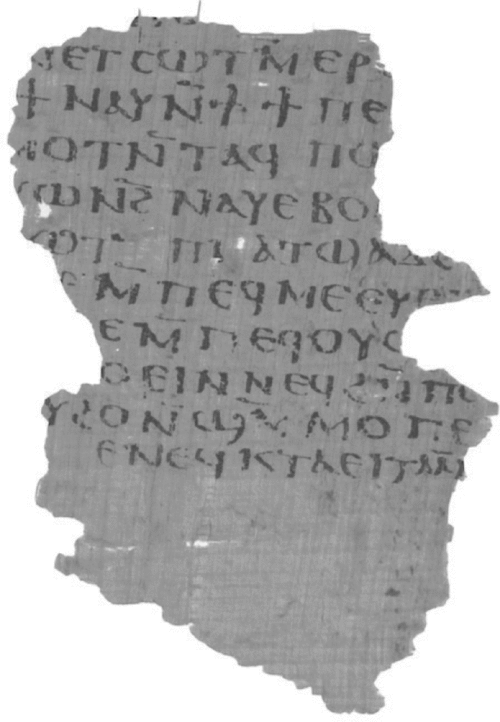
Figure 2. Fragment 1 against the fibers (53.19–29) = NHC I,3 30.27–31.1
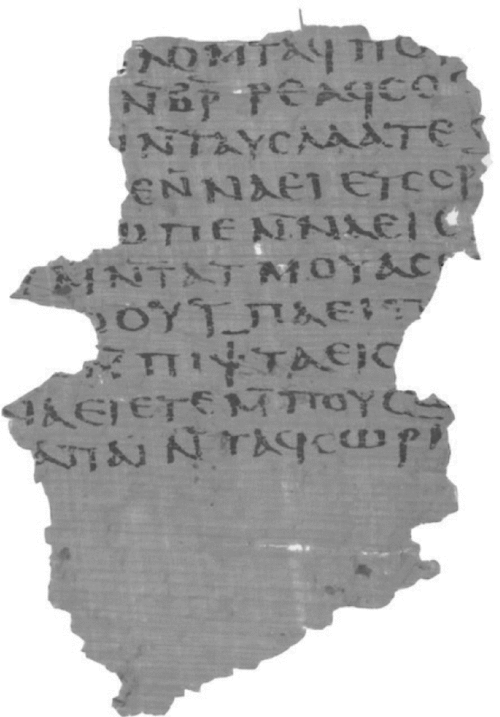
Figure 3. Fragment 1 with the fibers (54.19–28) = NHC I,3 31.25–32.2
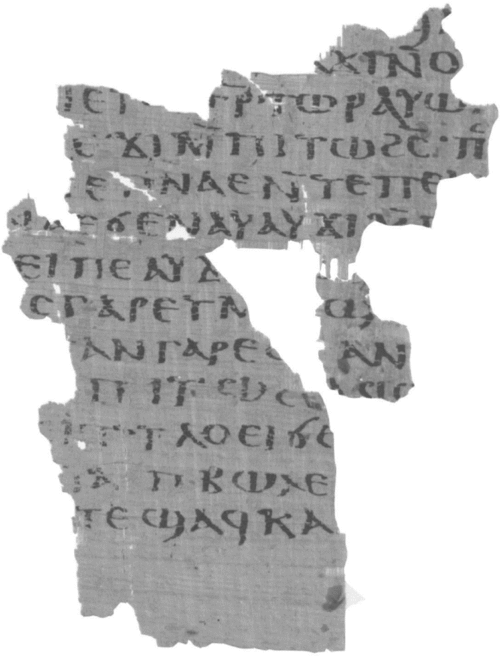
Figure 4. Fragment 3 with the fibers (59.18–30) = NHC I,3 36.14–26
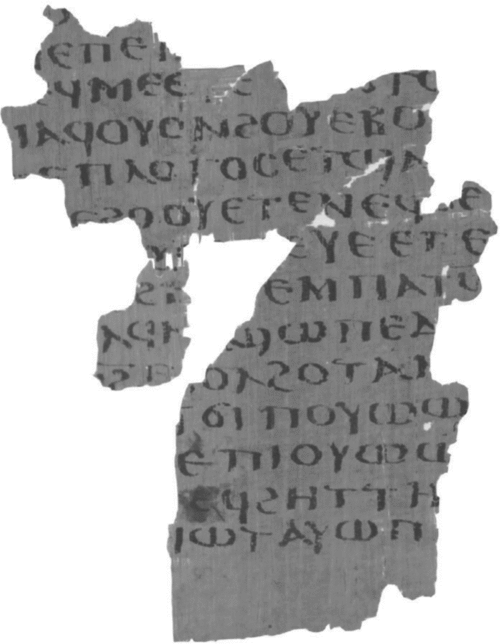
Figure 5. Fragment 3 against the fibers (60.17–30) = NHC I,3 37.7–21



